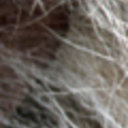Anti-fatigue effect of Zizania caudiflora (Turczaninow) Nakai.
Ključne riječi
Sažetak
The purpose of the present study was to investigate the anti-fatigue effect of Zizania caudiflora (Turczaninow) Nakai (ZC) and hydrolyzed ZC by malted barley (HZC) through a forced swimming test (FST) in mice. After the first measurement of immobility times, the mice were divided into control, fluoxetine, ZC, and HZC groups to match the swimming times in each group. The immobility times in the FST of the control as well as the fluoxetine, ZC, and HZC-administered groups after administration for three days were 135.3 ± 3.3,66.8 ± 3.9,120.2 ± 2.7, and 123.2 ± 2.9 sec, respectively. The immobility times in the FST of the ZC and HZC-administered groups for 14 days were significantly decreased in comparison with the control group (p < 0.01). In addition, the immobility times of ZC and HZC-administered groups for 14 days in the tail-suspension test were also significantly decreased in comparison with the control group (p < 0.05). The plasma levels of albumin, glucose, and total protein were significantly increased and creatine phosphokinase was significantly decreased in the ZC and HZC-administered groups compared to the control group. However, the levels of lactate dehydrogenase and blood urea nitrogen in the ZC and HZC-administered groups did not represent a significant difference compared to the control group. In summary, these results suggest that ZC or HZC might be a candidate for an anti-fatigue agent.


